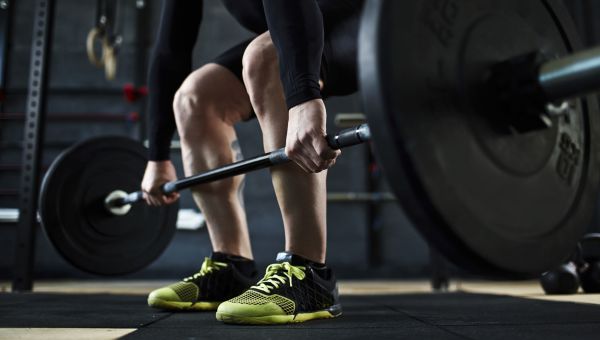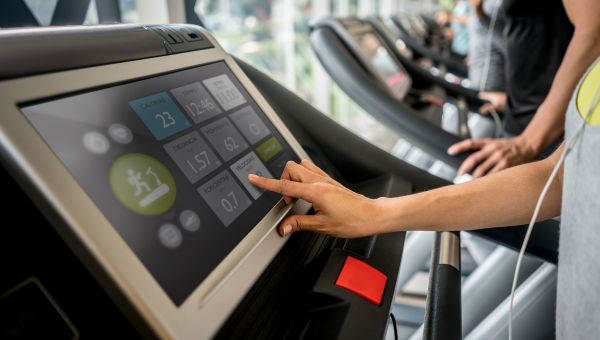6 ways you are sabotaging your workout
Reap the benefits of your time at the gym by dodging these workout no-nos.

Whether you’re a regular at the barre studio, set up shop in your basement or have sessions with a trainer, regular exercise lowers heart disease risk, improves bone strength and reduces stress. However, some fitness mistakes like forgetting to stretch could actually sabotage your workout.
Practicing the proper techniques and eating the right foods can help maximize your workout and lower your risk for injuries, says Omar Selod, DO, physical medicine and rehabilitation specialist at Medical City Fort Worth in Texas. Here are the most common workout mistakes plus ways to correct them.

Mistake #1: You’re not fueling right
Eating a snack before you hit the gym gives your body the fuel it needs to power through. Pre-workout, Dr. Selod suggests eating a mix of carbs, protein and certain fats like a banana with peanut butter. Post-workout, snack on a protein shake to help muscles recover. Refueling is more important after long or intense workouts (60 to 90 minutes), rather than a 30-minute stroll.
Staying hydrated regulates body temperature and wards off cramps and dizziness. Water is best because it’s free of added sugars that can hurt your waistline. The American College of Sports Medicine recommends 3 to 8 ounces of water every 15 to 20 minutes during exercise lasting less than 60 minutes.

Mistake #2: You stretch incorrectly—or not at all
Stretching before your workout may lower your risk of injury, improve flexibility and reduce pain. Cooling down after a workout helps muscles recover.
Dynamic stretching, or stretching while you move, is the best way to stretch. Avoid static stretching, where you stretch and hold a pose, as it may cause muscles to tighten. Instead, mimic the exercise you’re about to do. This will activate the muscles you’re about to use. After your workout, wind down with long stretches to relax the heated muscles. If you’re heading out for a run, then a few minutes of high-kicks will do the trick. Cool down with static hip-flexor stretching to elongate the heated muscles.

Mistake #3: You practice bad form
Practicing proper form when working out, especially weight training, can help prevent injury, muscle strain and joint damage. “A lot of people don't bend their knees or realize when you lift, you've got to lift with your legs, and not put pressure on your spine,” says Selod. Unsure if you’re using the proper form or techniques? Take the time to watch videos certified by personal trainers or work with a trainer to learn the right way to do the moves.

Mistake #4: You forget your core
Whether you’re lifting weights or running, your core needs to be strong, says Selod. “The core is where it all starts with exercise,” he adds. A strong core ensures that your pelvis, lower back, hips and abdomen effectively work together both during exercise and regular day-to-day activities.
Working out your core is especially important as you age. “As we get older, our core and our posture slowly deteriorate,” says Selod. Here are four workouts you can do to strengthen your core.

Mistake #5: You’re working out too hard
Taking your workouts to the next level by extending your workout time will help you tone up and slim down, but if you do too much too fast, you run the risk of injury.
“We see patients who go to the gym and start doing things they aren’t capable of doing. If a 45-year-old female who hasn’t lifted more than 30 pounds goes for a kettle bell, they could end up with a herniated disk in their back and numbness down their leg,” says Selod.
It’s different for everyone, so listen to your body, says Selod. If you experience chest pain, numbness, tingling or a racing heart beat, you’re probably working out too hard.

Mistake #6: You’re relying on the numbers
Tracking calories burned, distance run and heart rate range on the treadmill screen will help you gauge your workout progress and keep you motivated. However, these amounts don’t always give you the whole picture, says Selod.
“Those numbers don’t tell you what you ate before and after, and how often you are coming to the gym,” says Selod. Be mindful of other factors that influence your progress like how often you work out and what you’re eating while you’re not in the gym. In addition to a healthy diet and regular activity, also aim to get plenty of sleep in order to reach your fitness goals.
More On


video

article

slideshow


video


video
